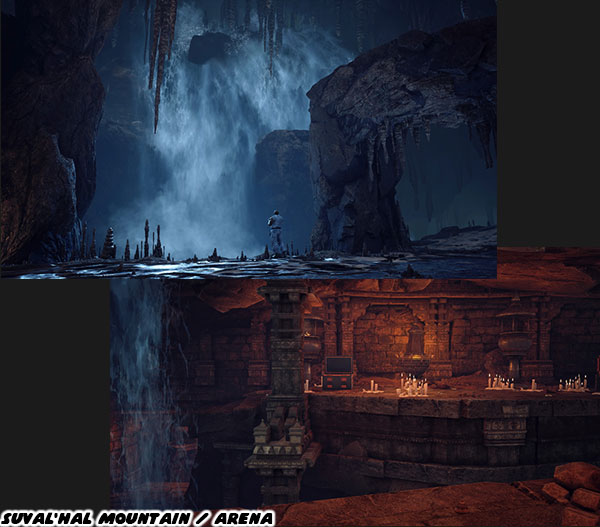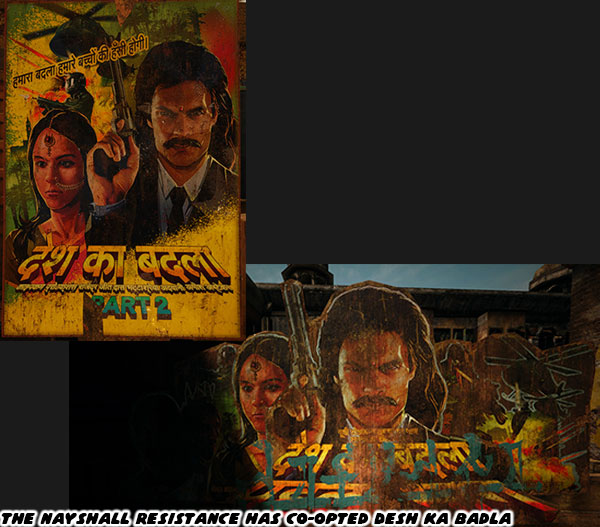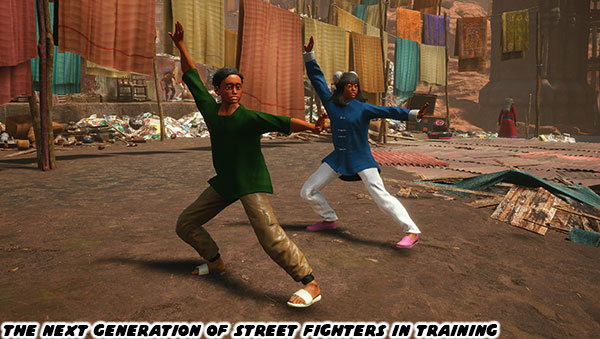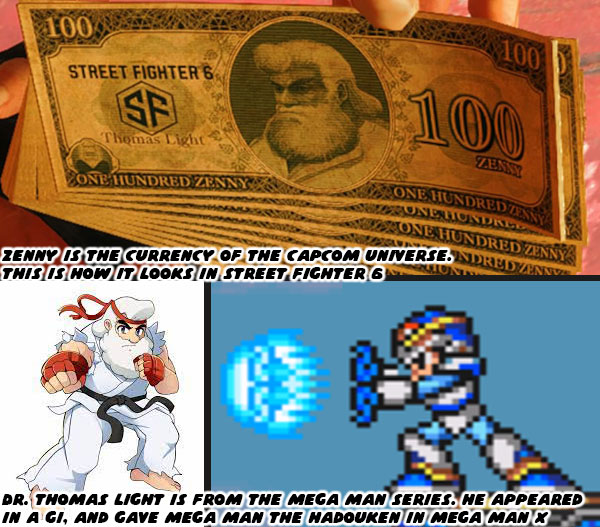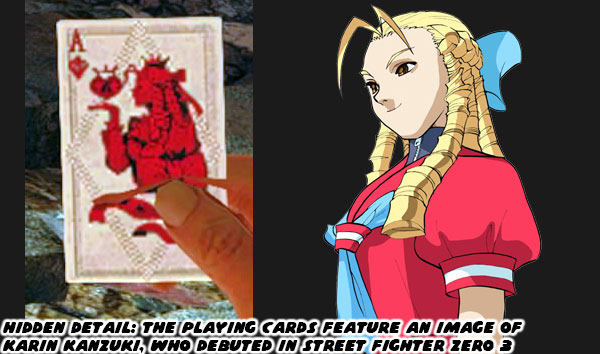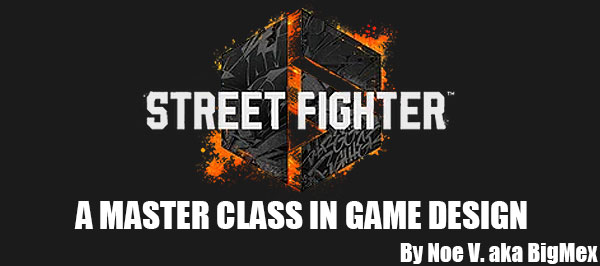
In previous blogs I talked about how good storytelling was about showing, rather than telling. In order to do this you had to fill a scene with relevant details. In a novel you would try to appeal to the five senses in your descriptions. This would make the reader be able to think a little bit harder about what was happening. In a movie this would be done by how the director framed a shot, what important details were in the picture, and what supporting elements were in the background. Street Fighter 6 worked because the developers populated the world with thousands of layers of detail. The player could walk by them, and not give them another thought. For example in Metro City these might be NPC’s having lunch at Beat Square. Some were talking on their cell phones, some were shopping. They made it look as if this was living, breathing city. In Old Nayshall it would be vendors at the market, people digging through trash piles, or even tourists taking selfies with the ruins.

I thought that the best NPC animations were the ones that told a story. The ones that reinforced the world that SF6 took place in. To me the most important animations were the ones that were not used anywhere else in the map. For example in Nayshall there was a little kid doing a traditional dance. His family, and friends were gathered around, clapping, and cheering as he danced. It was easy to run past this scene and not give it another thought. After all this kid, and the people around him didn’t have anything to do with the side mission or main plot. However the SF6 developers did not want one corner of the city to feel empty, to feel abandoned. There had to be some sort of life, some sort of movement everywhere you looked. It didn’t matter which direction you were approaching from. Immediately in front of you, in the corners, as well in the distance there would be something that caught your eye. Even in the most sparsely packed corners of Nayshall there was always some movement. It might be rats scurrying between buildings, a kid playing hopscotch, or a resident fanning themselves in the heat.

There was a secondary type of NPC animation that the developers used for a greater effect. These were the ones telling a story having to do with the martial arts. In the early part of this blog series I mentioned that everyone in Metro City was down to fight. It was a tradition that went back to the days of Mike Haggar. There were a few corners in Metro City where we could watch NPCs awkwardly trading punches. The same fighting tradition in Nayshall went back centuries, and it showed. Instead of random citizens battling we were watching actual masters doing combat. The named characters in the SF series, Ryu, Ken, Chun-Li, and Guile represented the absolute peak of a certain fighting style. We knew these were the best of the best. However that did not mean that they were the only ones who had mastered a particular fighting form.

In a couple of places in Nayshall you could actually see NPC characters who could throw fireballs, perform dragon punches, and even grapple like Zangief. The fights between these masters were like the legends of the ancient world. They didn’t happen in front of a camera. They took place on a dark alley at night with only a few witnesses. Word of mouth was the only way people would have ever heard about these encounters. Even the ones that happened in broad daylight could only be seen if you were a fellow fighter in the Lowlands arena. There were no cell phones, and no social media to expose these people. The same thing couldn’t be said if you were willing to throw down in the middle of the street. People would come out of the woodwork with phones in hand. They wanted to share what was happening, to blow up a culture that had existed in myth for centuries.

Street Fighter 6 took place in the near future, but the series was always a celebration of the martial arts myth. There had been traditions in each country of underground fighting tournaments. Hollywood, and Hong Kong cinema made them much more exotic than they really were. It was the legend of the fighters, the masters of lost forms that always sparked our curiosity. Who were these men that could run across water, throw fire out of their hands,
or defeat 100 opponents in a day? The stories of these fabled martial artists were like Bigfoot. Everyone knew about them but the proof was elusive, second-hand, and just out of focus. Maybe centuries ago there was a magician in India that knew the secrets of stretching his limbs, breathing fire, and levitation. But these accounts were just rumors. There was no proof, no documentation other than a story told by an ancestor.
Scholars had been searching for proof of levitation for centuries, such as the case of one of the most recent mystics Bhaduri Mahasaya.

The Street Fighter universe celebrated these fables. The designers wanted audiences to believe in the impossible, even if just for a moment. They wanted us to have hope that someday we might be at the right place, at the right time, and see a miracle with our own eyes. These were represented on the NPC battles, where we saw that someone out there other than Ken, and Ryu actually had the ability to perform a hadoken, a fireball. There was another NPC story that the developers told in Nayshall, specifically in the foothills of Vashal. There were monks training to be warriors in honor of Suval’hal.

The majority of these monks were found in the Foothills of Mount Vashal. They were all different body shapes, and abilities. Some were seated, some were standing, all were meditating. Depending on how dedicated they were to the arts you could find them in all sorts of precarious positions. Some were balanced on one foot at the edge of a cliff. Some were clinging to the side of the rock walls. If you looked closely you would notice that the ones hanging on the faces of the rocks were trembling in fear. They would look down, and begin shaking, trying not to lose their grip. The fear of falling could not be overcome with meditation. Still others weren’t as dedicated to their studies. You might find them breathing heavily, talking about returning to Old Nayshall for one more feast before climbing Mt. Vashal. Some were hanging out at the river, or even chilling with a radio.

There was another one of those “throw away” details that I thought was absolutely brilliant. In a corner of the foothills, overlooking Old Nayshall there were three monks. Two were balanced on one foot, and the one in the middle was seated in the
lotus position, and levitating. It was no trick, no beam was supporting him from behind. No gimmick was being used here. It was one of those honest to goodness miracles. The only other person that we knew of that had reached this type of enlightenment in the SF universe was Dhalsim. While Rudra may have all of the basic attacks of Dhalsim he could not levitate. I do not think he had reached absolute enlightenment.
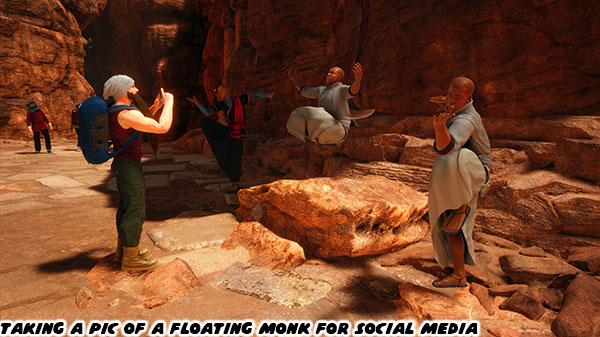
What the developers did with this background character was nothing short of genius. Most tourists NPCs would walk by him, but every now, and then somebody would stop to take a picture. The miraculous was just something to post on social media. Think about it for a second. “Here was my trip from Nayshall. I ate local food, saw an underground fight, bought some hand woven clothing, oh yeah, I also took a picture of a guy that could float…” It was definitely some commentary from the development team. There were amazing people in the world, and we were simply too busy to notice them, or believe in the extraordinary.

The final climb to Mount Vashal wouldn’t happen until the end of the game. The local authorities had closed off the roads because they were too dangerous to take by foot. When the paths were opened you would ride a donkey to reach an entirely new environment. This new place looked much colder, and windswept. We were clearly in the Himalayan range now. Tibetan Prayer Flags were blowing violently in the wind.

The further along you went the more concentrated the monks became. They seemed to be in better shape, and more capable than the monks closer to the Foothills. They were on a pilgrimage to their old temple. They were joined by professional fighters from all over the world. They were making their way to the Suval’hal Arena. There were also security forces from Buckler, the company that Luke was in charge of. As well as security provided for the NGO leaders. The most extreme of the monk trainees could be spotted in a dangerous position. Located high above a crevice was a monk hanging onto an overhead rock face. He just swung there, legs crossed, in a deep state of meditation. I returned during the night looking for him, and the monk was not there. I certainly hoped that he could levitate.

Near the peak a handful of monks were joined by one spiritual tourist. They were meditating at the edge of a cliff. It was very apparent that while a lot of tourists talked about finding their spirituality in Old Nayshall. They said that they felt a strong connection with the culture, and the people of that remote corner of the world. They were determined to climb that path along with the rest of the monks, and prove their devotion. In the end few made it to the top. One of the monk leaders was quick to point out how their culture was becoming a commodity.

Of course you understood how difficult it was to reach this place. It had taken you two major tournaments, and hundreds of smaller fights in order to prove that you belonged here. By this point in the game you were the further from home than you’d ever been. You had gone through countless trials. Defeated hundreds of opponents, and still didn’t have anything to show for it. Not one trophy, not one championship, not even an official record. The only thing that was pushing your character to continue was to find out what strength was.

The Resistance had already reached out to you. They warned you that they were going to do whatever it took in order to win the championship. Not for the honor of the prize, but for the survival of their country. They needed to get to JP who was the host, and organizer of the event. What they had planned for him would be revealed in the 11th hour. The final portion of the game was going to be some amazing storytelling. We will dig into it on the next blog entry. I hope to see you back for that. If you are a long time fan of Final Fight, or Street Fighter then I would like to hear your impressions of SF6. If you have never played any game previously then tell me your experiences in the comments section please. As always if you would like to sponsor me
please visit my Patreon page and consider donating each month, even as little as $1 would help make better blogs and even podcasts!


















